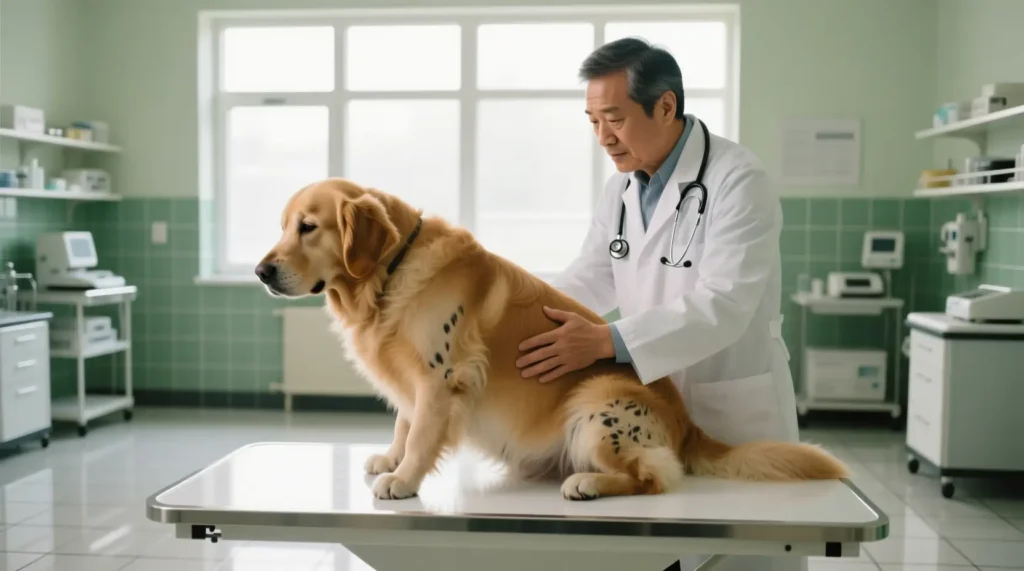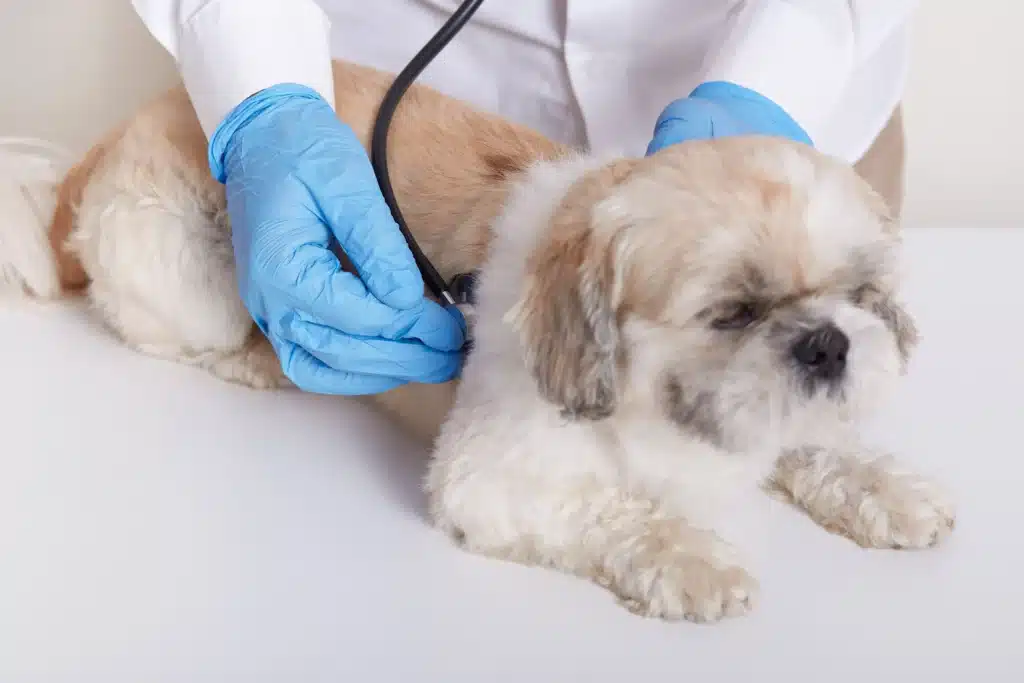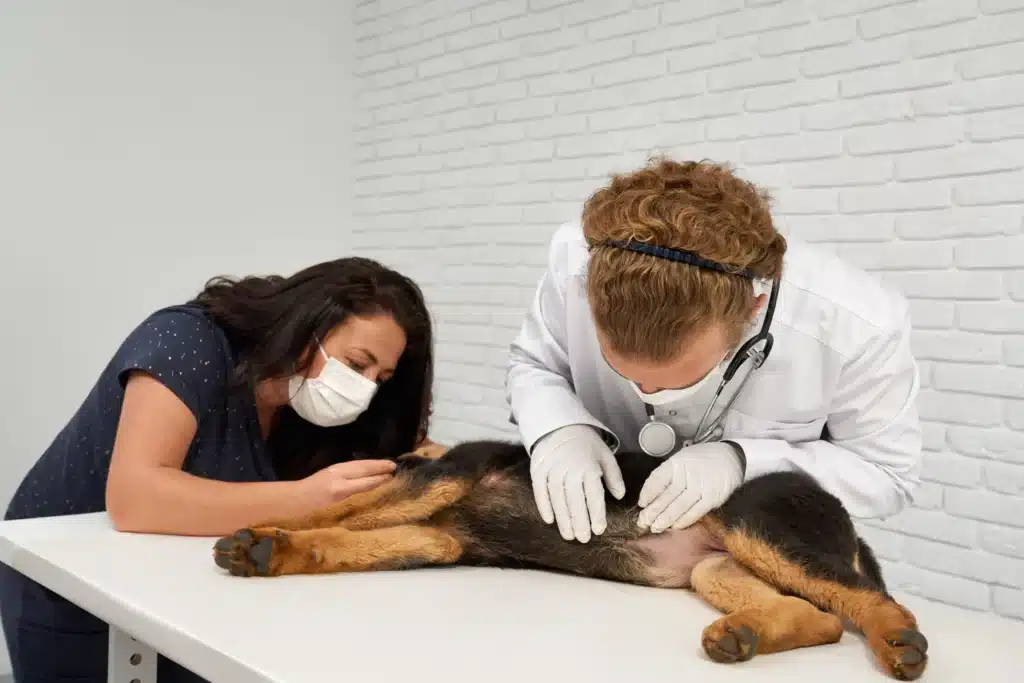Cushing’s disease in dogs is a hormonal disorder in which the adrenal glands secrete excessive cortisol, most often triggered by a pituitary tumor (~85% of cases) or an adrenal tumor (~15%). The condition, also called canine hyperadrenocorticism, typically affects middle-aged to senior dogs.
Cortisol regulates metabolism, immune defense, and stress responses. When levels remain high, dogs develop increased thirst, appetite, urination, and hair loss. According to the Cornell University College of Veterinary Medicine, endocrine diseases like Cushing’s are among the most frequent hormonal disorders in older pets.
Breeds most prone: Poodles, Dachshunds, Beagles, Boxers, and Terriers. Most diagnoses occur between ages 7 and 12.
What Causes Cushing’s Disease in Dogs?
Cushing’s disease arises from three primary causes: pituitary-dependent hyperadrenocorticism (PDH), adrenal tumors (AT), and long-term steroid use (iatrogenic form).
- Pituitary-dependent hyperadrenocorticism (PDH): Small pituitary adenomas produce excess ACTH, overstimulating adrenal glands. PDH accounts for ~80–85% of cases.
- Adrenal tumors (AT): Adrenal masses autonomously release cortisol. Around half are malignant.
- Iatrogenic Cushing’s: Chronic corticosteroid therapy (prednisone, dexamethasone) suppresses normal adrenal feedback, mimicking hypercortisolism.
A large-scale study published in Veterinary Record found that breeds such as Border Terriers, Lhasa Apsos, and Staffordshire Bull Terriers had significantly higher odds of developing Cushing’s than crossbreeds.
What Are the Symptoms of Cushing’s Disease in Dogs?
The most common symptoms of Cushing’s disease in dogs are excessive thirst, frequent urination, increased appetite, hair loss, and a pot-bellied appearance.
According to the Royal Veterinary College (RVC), over 70% of affected dogs present with polyuria/polydipsia (PU/PD), while hair loss and pot-belly are frequent secondary signs.
Common symptoms:
- Polydipsia (increased drinking): Dogs may drink 2–4× normal amounts.
- Polyuria (frequent urination): Often leads to accidents indoors.
- Polyphagia (increased appetite): Dogs beg constantly or scavenge food.
- Alopecia (hair loss): Symmetrical hair thinning on trunk and tail.
- Abdominal distension: “Pot-belly” from muscle wasting and fat redistribution.
- Muscle weakness: Difficulty climbing stairs, fatigue on walks.
- Skin changes: Thin skin, easy bruising, delayed wound healing.
- Recurrent infections: Urinary tract infections (UTIs), ear infections, or skin infections.
Advanced/end-stage symptoms:
- Severe lethargy, collapse episodes.
- Incontinence with dermatitis.
- Neurological signs (rare, if pituitary macroadenoma enlarges).
- Concurrent diabetes or hypertension complications.
A study in the Journal of Small Animal Practice (2019) confirmed that alopecia, PU/PD, and pot-belly were the three most predictive features of canine hyperadrenocorticism.
How is Cushing’s Disease Diagnosed in Dogs?
Cushing’s disease in dogs is diagnosed through hormone tests such as the ACTH stimulation test, the low-dose dexamethasone suppression test (LDDS), urinalysis, and imaging like ultrasound.
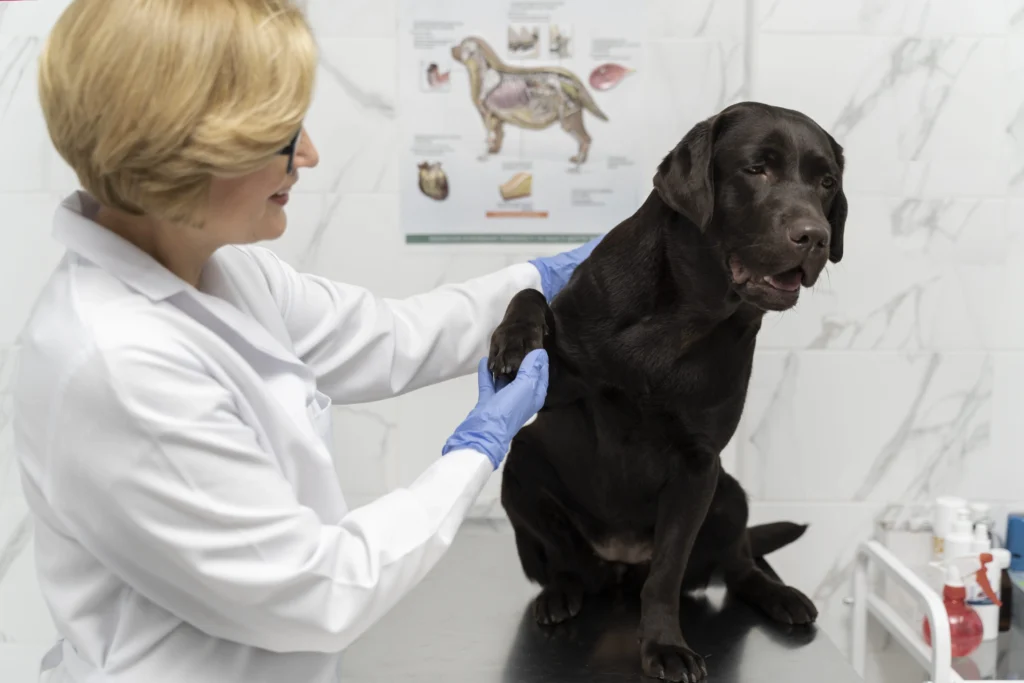
Diagnosis is complex because symptoms often mimic other diseases such as diabetes, kidney disease, or hypothyroidism.
Key diagnostic tools:
| Test | Purpose | Approximate Sensitivity / Diagnostic Use | Notes / Caveats |
|---|---|---|---|
| ACTH Stimulation | Measures adrenal cortisol response | ~ 57–95% (≈ 80% often cited) | Has lower sensitivity than LDDS for spontaneous Cushing’s. Useful for monitoring treatment and diagnosing iatrogenic Cushing’s. |
| Low-Dose Dexamethasone Suppression (LDDS / LDDST) | Cortisol suppression after dexamethasone | ~ 85–100% in many studies | Considered “preferred screening” in many guidelines, though specificity is lower in dogs with other illnesses. |
| Urine Cortisol:Creatinine Ratio (UCCR / UCCR screening) | Cortisol / creatinine in urine | High sensitivity (often ~ 75–100%) for screening | Useful as a rule-out test; low specificity—many false positives in dogs with nonadrenal illness. |
| Ultrasound (Abdominal Imaging) | Detects adrenal tumors / adrenal size | Not usually given a numerical sensitivity | Helps identify adrenal tumors and asymmetry; cannot reliably confirm functional disease. |
Important Note: Because Cushing’s shares signs with diabetes and kidney disease, misdiagnosis is possible if only one test is used. Most veterinarians combine bloodwork, urinalysis, and imaging for confirmation.
What Treatment Options Are Available for Cushing’s Disease in Dogs?
Cushing’s disease in dogs is treated with medications, surgery, radiation therapy, or steroid tapering, depending on the cause and the dog’s overall health.
1. Medication Therapy
- Trilostane (Vetoryl®): Inhibits cortisol production in adrenal glands. It is the current first-line therapy for pituitary-dependent hyperadrenocorticism (PDH). American College of Veterinary Internal Medicine reports that trilostane improves symptoms in ~70–85% of dogs.
- Mitotane (Lysodren®): Destroys adrenal cortex cells, reducing cortisol production. Effective but requires careful monitoring to avoid Addison’s disease.
- Ketoconazole: Occasionally used if trilostane/mitotane are not tolerated, but less effective. AVMA Journal documents cases of temporary improvement.
Monitoring:
Dogs on trilostane or mitotane require regular ACTH stimulation tests and bloodwork every 2–3 months.
2. Surgical Options
- Adrenalectomy: Removal of an adrenal tumor may cure Cushing’s if the mass is benign and localized.
- Pituitary surgery: Rare in veterinary practice but performed at specialty centers.
3. Radiation Therapy
- Recommended for pituitary macroadenomas causing neurological signs.
- Can shrink tumors, reduce ACTH overproduction, and improve quality of life.
4. Iatrogenic Cushing’s Management
- If caused by prolonged steroid use, treatment involves gradual tapering of corticosteroids under veterinary supervision to avoid adrenal crisis.
5. Supportive & Natural Management
- Diet adjustments: Low-fat, high-quality protein diets to support muscle mass.
- Supplements: Melatonin and lignans are sometimes recommended in atypical Cushing’s, though evidence remains limited.
- Concurrent condition care: Many dogs need additional management for diabetes, hypertension, or infections.
What Foods or Natural Remedies May Help Dogs with Cushing’s Disease?
Dogs with Cushing’s disease should be fed the diets that are low in fat, moderate in protein, and high in fiber. These adjustments help maintain healthy weight, muscle mass, and stable energy levels.
Recommended Diet Approaches:
- Best Dog Food Options – Veterinary diets that support liver function and reduce fat intake are preferred. Both dry and wet dog food choices are available depending on your pet’s needs.
- High-Fiber Additions – Vegetables such as pumpkin and green beans may help regulate digestion and appetite.
- Controlled Protein – Lean protein supports muscle without straining organs.
Natural Supplements:
- Melatonin – Sometimes used to reduce hair loss and regulate sleep cycles.
- Lignans – Plant compounds believed to help balance cortisol levels in atypical Cushing’s cases.
- Omega-3 Fatty Acids – Support skin, coat, and immune health.
Important: Natural remedies should be used only under veterinary supervision. They may help manage symptoms but do not replace prescribed medications like trilostane or mitotane.
Learn more in our guides:
- Best Dog Food for Cushing’s Disease
- Melatonin and Natural Treatments for Dogs with Cushing’s Disease
Cost Overview (Typical Ranges)
| Treatment | Approx. Cost (USD) | Notes |
|---|---|---|
| Trilostane | $50–150/month | Ongoing, plus monitoring bloodwork |
| Mitotane | $50–120/month | Requires frequent testing |
| ACTH stim test | $100–200/test | Every 2–3 months |
| Adrenalectomy | $2,000–6,000 | Surgical cure possible |
| Radiation therapy | $2,000–5,000 | Specialty clinics only |
What Is the Life Expectancy of Dogs with Cushing’s Disease?
Dogs with Cushing’s disease can live between 2–4 years with treatment, while untreated cases usually survive 6–24 months depending on disease type and complications. Prognosis varies by whether the disease is pituitary-dependent, adrenal-related, or iatrogenic.
By type:
- Pituitary-dependent (PDH): Median survival is ~30 months with trilostane therapy. Some dogs live beyond 4 years if comorbidities are controlled (UC Davis Veterinary Medicine).
- Adrenal tumors (AT): Benign tumors surgically removed can allow 2–3+ years of survival. Malignant adrenal tumors often shorten lifespan to 6–18 months.
- Iatrogenic Cushing’s: Prognosis depends on tapering steroids safely and managing the original illness.
Prognostic factors influencing survival:
- Age at diagnosis (older dogs have lower survival rates).
- Presence of concurrent diseases (diabetes, kidney disease, hypertension).
- Tumor type (benign vs malignant).
- Owner compliance with treatment monitoring (ACTH tests, bloodwork).
A study in the Journal of Veterinary Internal Medicine reported that dogs treated with trilostane showed a 1-year survival rate of 86% and a 2-year survival rate of 74%.
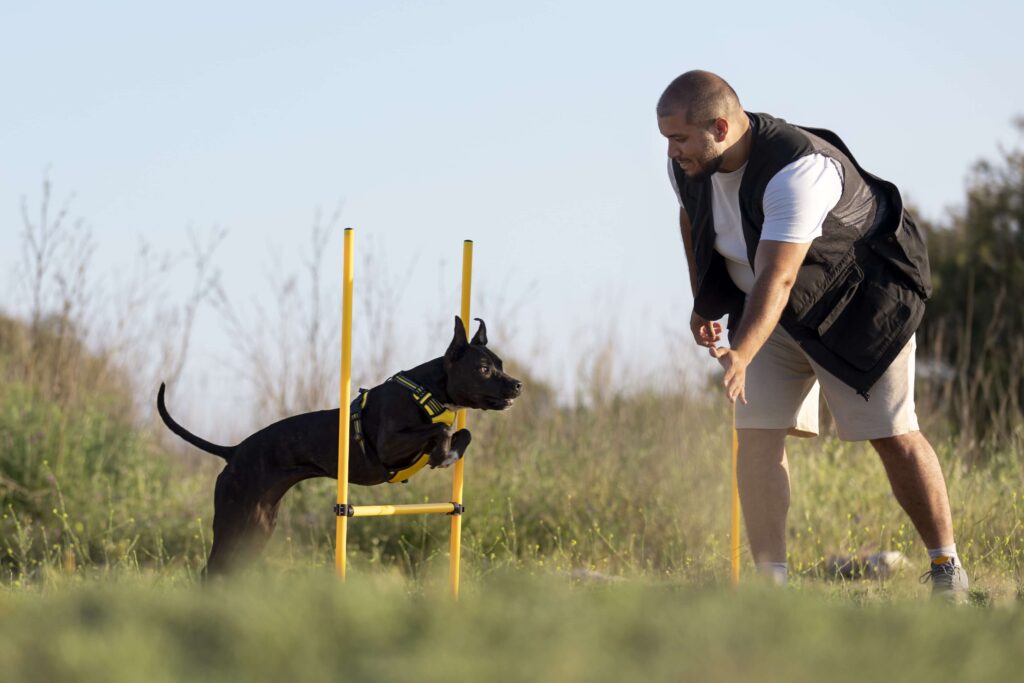
Life Expectancy Overview
| Disease Type | Median Survival | Notes |
|---|---|---|
| PDH (pituitary-dependent) | ~30 months | Can exceed 4 years with treatment |
| Adrenal tumor (benign) | 2–3+ years | Surgical cure possible |
| Adrenal tumor (malignant) | 6–18 months | Poorer prognosis |
| Iatrogenic | Variable | Depends on tapering steroids + original disease |
| Untreated | 6–24 months | Progressive symptom worsening |
What Are the Final Stages of Cushing’s Disease in Dogs?
The final stages of Cushing’s disease in dogs are marked by severe weakness, recurrent infections, incontinence, and refusal to eat. At this point, most dogs no longer respond to treatment.
Common End-Stage Signs:
- Persistent lethargy or collapse.
- Uncontrolled urinary accidents with skin sores.
- Severe muscle wasting and weight loss.
- Neurological decline such as seizures or disorientation.
- Loss of interest in food, play, and family interaction.
Many veterinarians recommend using a Quality of Life (QoL) scale to track daily well-being. A score consistently below 4/10 often suggests that suffering outweighs comfort.
For compassionate care decisions, see our full guide:
- When to Euthanize a Dog With Cushing’s Disease
How Does Cushing’s Disease Affect a Dog’s Quality of Life?
Dogs with Cushing’s disease can maintain a good quality of life if treatment controls symptoms, but unmanaged or advanced disease often causes discomfort, weakness, and recurrent infections.
Quality of life (QoL) depends on hydration, mobility, appetite, and engagement in daily activities. According to the American Veterinary Medical Association (AVMA), veterinarians often use structured QoL scales to help owners make decisions about care and, when necessary, euthanasia.
Quality of Life Indicators
Veterinary QoL checklists usually assess:
- Appetite: Eating consistently without nausea or refusal.
- Hydration: Drinking normally without excessive thirst or dehydration.
- Mobility: Ability to walk, climb stairs, and stand without collapse.
- Hygiene: Urination control, absence of skin sores from incontinence.
- Infections: Frequency of urinary tract infections or skin infections.
- Happiness: Tail wagging, play, seeking family interaction.
- Comfort: No signs of constant pain, anxiety, or confusion.
QoL Scoring Example (0–10 scale per factor)
| Factor | 0–3 = Poor | 4–6 = Moderate | 7–10 = Good |
|---|---|---|---|
| Appetite | Refuses food | Eats inconsistently | Eats normally |
| Mobility | Cannot stand | Walks with weakness | Moves comfortably |
| Infections | Chronic, recurrent | Occasional | None |
| Engagement | Withdrawn | Limited | Playful, interactive |
| Comfort | Severe pain | Some discomfort | Comfortable |
Many veterinarians recommend euthanasia when multiple scores remain below 4/10 for several days, despite treatment.
When Should Euthanasia Be Considered for Dogs with Cushing’s Disease?
Euthanasia should be considered when Cushing’s disease causes unmanageable suffering, and quality of life remains poor despite treatment.
Veterinarians recommend using structured Quality of Life (QoL) scales to guide decisions. According to the AVMA, end-of-life discussions focus on maintaining comfort, dignity, and relief from suffering.
Indicators That Euthanasia May Be Appropriate
- Persistent loss of appetite or refusal to eat.
- Severe lethargy or collapse episodes.
- Chronic incontinence with skin infections or sores.
- Uncontrolled infections that return despite antibiotics.
- Inability to stand, walk, or move comfortably.
- Signs of neurological decline (seizures, confusion, disorientation).
- QoL scores consistently below 4/10 over several days.
Compassionate Guidance
- Veterinarians often recommend a QoL diary where owners mark daily well-being scores. A visible decline helps confirm the right time.
- Owners should also consider whether their dog still experiences moments of joy (playing, greeting, wagging tail). When these are absent, suffering may outweigh comfort.
- Euthanasia is not giving up; it is often considered the final act of kindness to prevent unnecessary suffering.
Frequently Asked Questions About Cushing’s Disease in Dogs
Q1: Is Cushing’s disease in dogs painful?
Cushing’s disease itself is not painful, but secondary complications like urinary infections, arthritis, and skin issues may cause discomfort.
Q2: Can Cushing’s disease cause seizures in dogs?
Seizures are rare but can occur if a pituitary macroadenoma expands into brain tissue or from secondary hypertension and diabetes complications.
Q3: What breeds are most prone to Cushing’s disease?
Breeds with higher risk include Poodles, Dachshunds, Terriers, Beagles, and Boxers, with diagnosis often after age 7.
Q4: What is the cost of treating Cushing’s disease?
Trilostane therapy costs $50–150/month plus $100–200 for periodic blood tests. Surgery ranges $2,000–6,000, while radiation averages $2,000–5,000.
Q5: What foods are recommended for dogs with Cushing’s disease?
Veterinary diets with moderate protein, controlled fat, and high fiber are recommended to maintain weight and muscle. Always confirm your diet with a veterinarian.
